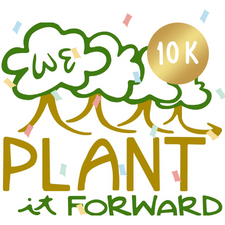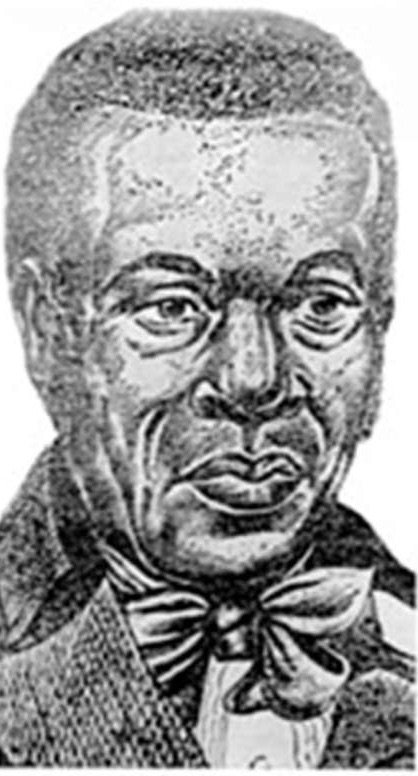A Glance into the History of John Chavis Memorial Park
Written by Julia Davis
Written by Julia Davis
John Chavis Memorial Park, also known as Chavis Park, is located in Southeast Raleigh, North Carolina. We Plant it Forward is holding its Arbor Day Festival at Chavis Park on March 25th, at 12-4pm. Before the day of the festival, we wanted to share the history and legacy of John Chavis and the park itself.
Who was John Chavis?
A portrait of John Chavis, image from https://raleighnc.gov/parks/history-john-chavis-memorial-park
John Chavis’ Education
It is believed that John Chavis was born in Granville County, North Carolina in the year 1763. There is little documentation about his early years, but there is evidence that John Chavis was born legally free during the era of slavery. The free status of him and his family meant they were free to be educated, able to vote, and most of his family could read and write.
In 1780, John Chavis joined the revolutionary war for American independence and his freeborn status allowed him to do so. After returning from the war in 1792, John Chavis continued his education at Princeton University where he studied philosophy and religion. He then furthered his education at what is now known as Washington and Lee University. While in Virginia, John Chavis gained his license to preach as a Presbyterian minister in 1800. Through his studies, John Chavis became the first African American to obtain a college degree in the United States.
John Chavis’ Legacy
Chavis began preaching to many people in southern Virginia and northern North Carolina. According to one of Chavis’ descendants, Helen Chavis Otho, he “had a great sense of purpose, a sense of responsibility to his community and he wanted to uplift those who had been enslaved.” John Chavis established a school inside his home where anybody was able to be educated regardless of their race. White parents soon complained and then Chavis began to teach white students during the day and black students at night. Chavis made sure to prepare his black students to the best of his ability for the challenges they would face living in the 1830s. John Chavis’ school was considered one of the best in the state and many of his students successfully went on to become political figures, showing the school’s success. John Chavis continued to advocate for underrepresented communities and preach to those around him until he passed away in 1838.
A sculpture of John Chavis, an image from https://www.thegospelcoalition.org/blogs/kevin-deyoung/black-history-month-john-chavis-1763-1838/
The Creation of John Chavis Memorial Park
In 1935, the City of Raleigh leased the land for what will soon become John Chavis Memorial Park. The city then applied for federal funding to begin constructing the park. From 1936 to 1937, many of the park’s attractions were built. This included a swimming pool, tennis courts, an amphitheater, athletic fields, and the historic Allan Herschell Carousel which is still in use today. The grand opening of the park was on July 4th, 1937.
An image of the Allan Herschel Carousel at John Chavis Memorial Park, image from https://raleighnc.gov/parks/history-john-chavis-memorial-park
In 1938, today’s Raleigh-Wake Citizen’s Association petitioned for the park to be named after John Chavis. On May 10th of that year, the park was officially dedicated and over 3,000 people attended the ceremony. John Chavis Memorial Park became the first marker in the state of North Carolina to recognize African American history.
A photo from the 1930’s showing the park as a social gathering place, image from https://www.newsobserver.com/news/local/counties/wake-county/article76800957.html
Since its construction and dedication, John Chavis Memorial Park has been used for countless athletic events for high schools, semi-pro teams, and what is now Saint Augustine’s University. The park also became a place where people from all over would travel to enjoy the outdoors as well as the park's many amenities. With over 80 years of park history, John Chavis Memorial park continues to grow and flourish as an enjoyable meeting place for the people of Raleigh.
For more information on John Chavis, check out many of his letters between him and some of his most influential students, like Willie P. Mangum who was a U.S. senator:
https://www.logcollegepress.com/john-chavis-17631838
Banner Image: Overview of John Chavis Memorial Park with the City of Raleigh in the background, image from https://www.visitraleigh.com/meetings-and-conventions/blog/post/unique-meeting-site-spotlight-john-chavis-memorial-park/
Sources:
https://www.ncmuseumofhistory.org/a-storied-past/john-chavis





